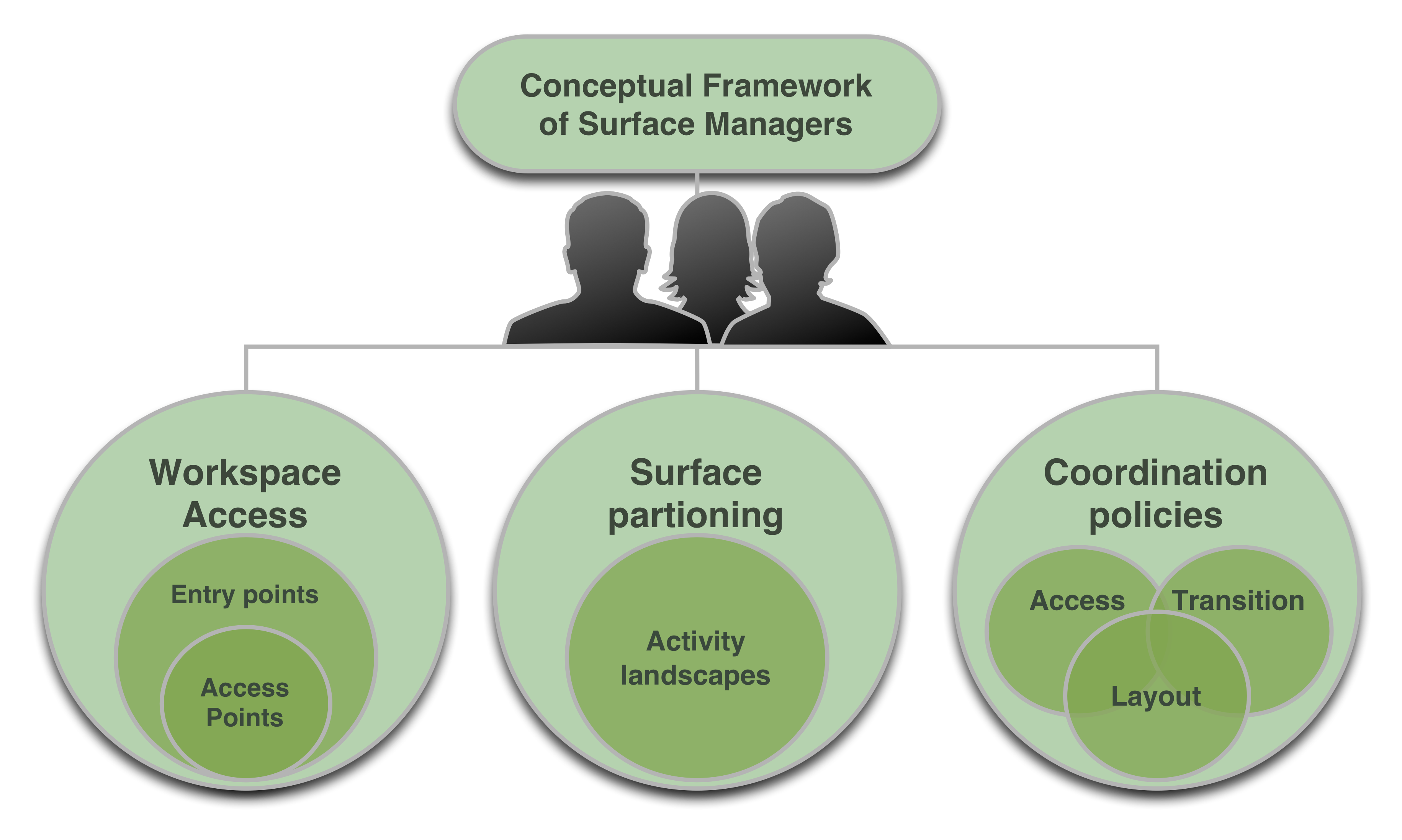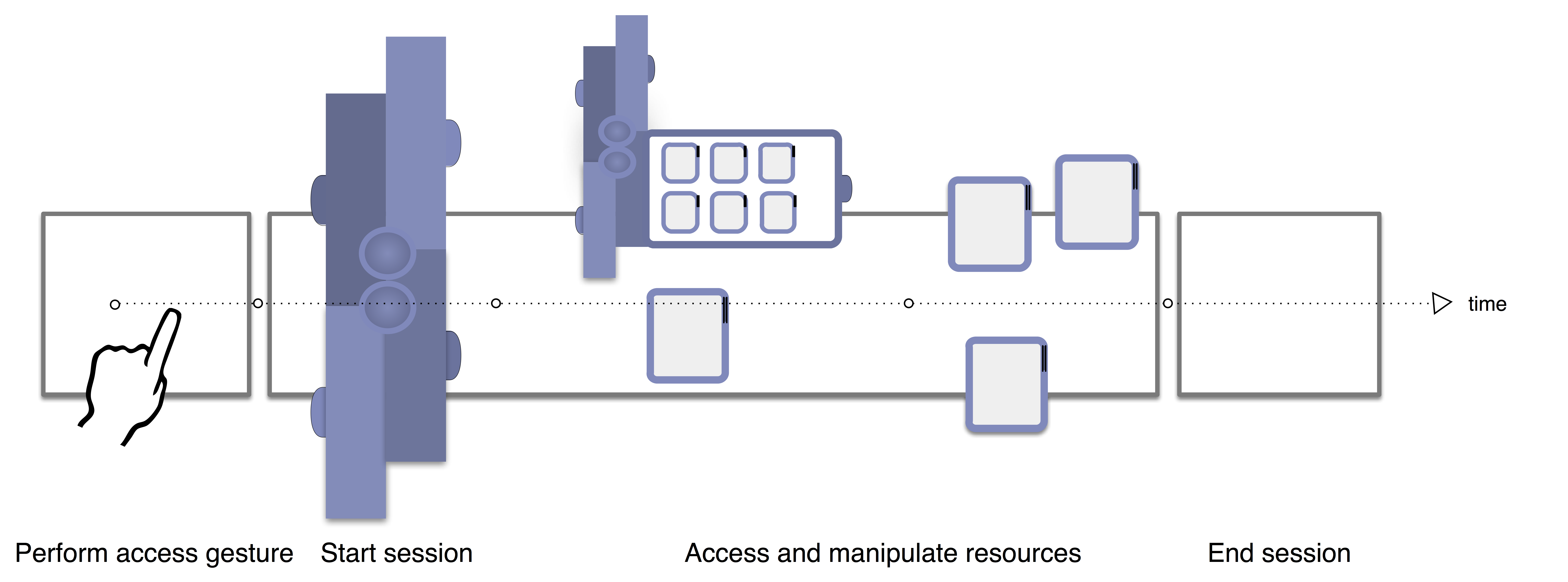Conceptual Framework for Surface Manager on Interactive Tabletops

Description
We proposes that to create a useful workspace in tabletop environments, it's important to gain a deep understanding of users physical interaction and work-patterns around table surfaces. Therefor, we present a conceptual framework that defines the abstract structures users need during their work processes on horizontal surfaces. The concepts of the framework will provide designers with coherence to empirical inquiry. The framework presents three concepts: workspace access, surface partitioning, and coordination policies. Workspace access is a set of structures that users need to initiate and move through a task's workflow. Surface partitioning is the act of dividing a shared work area into different spaces, each with different characteristics and purpose. A coordinating policy is an underlying mesh of mechanisms and rules that coordinate users' actions or govern the layout of work items during a workflow.
Quick Links
| Paper |
| Project folder [Internal Access} |
| Contact: Nur Hamdan |
Authors
Surface Manager and UI Toolkit
We developed window system and UI toolkit for public interactive tabletops. Surface Manager supports multi-tasking for co-located users. It uses heuristics (location, timestamp, previous and current activity) to identify unique users and provided each with his/her own instance of the manager.

Publications
- Nur Al-huda Hamdan. A Surface Manager for Interactive Tabletops. Master's Thesis, RWTH Aachen University, Aachen, March 2013.


- Nur Al-huda Hamdan, Simon Voelker and Jan Borchers. Conceptual Framework for Surface Manager on Interactive Tabletops. In Extended Abstracts of the 2013 CHI Conference on Human Factors in Computing Systems, CHI EA '13, pages 1527–1532, ACM, New York, NY, USA, 2013.



